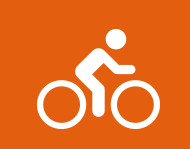Types Of Exercise
Make it a triple play
When you think about exercise, it’s helpful to break it down into three main categories—flexibility training, aerobic exercise, and strength training. Remember: Talk to your healthcare provider before you begin or add to any physical activity program.


Flexibility Training:
Any movement that increases your range of motion
What it does: It helps to keep you limber and to warm up your muscles.
How it helps: It may prevent injury during aerobic exercise and strength training.
Examples:
- Stretching
- Yoga
- Tai chi

Aerobic Exercise:
Any activity that increases the body's use of oxygen
What it does: It causes your heart rate and breathing rate to increase while you are exercising.
How it helps: It can lower blood sugar and helps your body use insulin better. It also helps maintain blood flow to the feet, helping to reduce the chance of foot problems.
Other benefits: It may lower blood pressure and may even improve cholesterol levels. It can help make your heart and bones stronger, reduce stress, and improve overall blood circulation, and it may even lower your risk for heart disease.
Examples:
- Brisk walking (outside or inside on a treadmill)
- Bicycling/stationary cycling indoors
- Dancing
- Swimming or water aerobics
- Playing tennis
- Jogging/running
- Hiking
- Gardening

Strength Training:
Any exercise that improves muscular strength
What it does: Resistance training helps you build strength, stamina, and muscle.
How it helps: It may lower blood sugar and may make your body more sensitive to insulin.
Other benefits: It helps you keep and build strong muscles and bones, to help reduce your risk for everything from osteoporosis to bone fractures. Plus, the more lean muscle mass you have, the more calories you burn—even when your body is at rest.
Examples:
- Weight machines or free weights at the gym
- Using resistance bands (stretchy, giant rubber bands)
- Lifting light weights or objects like canned goods or water bottles at home
- Calisthenics or exercises that use your own body weight to work your muscles (examples are pushups, situps, squats, lunges)
- Strength training classes
- Other activities that build and keep muscle, like vigorous gardening
Coach Wendy says:
No weight loss isn't a total loss
So many of us think of exercise as strictly a way to lose weight. But physical activity has many more benefits. So even if you’re not shedding pounds, keep at it.

Game Plan Action Item: How much exercise
These tips are designed to help make exercise a habit. First, get a sense of what you’re aiming for and then see how you can schedule it in. It might seem like a lot, but when you spread it out over a week, it becomes much more doable.
Here are suggestions from the American Diabetes Association for how much exercise you should try to do:
- At least 22 minutes a day of cardio exercise
Think how much time you spend watching TV or on the computer. Take a moment to pull out your calendar and see where you might have time. Divvy it up any way you want, as long as you’re exercising at least three days a week. You could do 50 minutes three days a week, 30 minutes five days a week, or 22 minutes daily. You don’t have to do it all in one shot, either. You can break your exercise sessions into 10- to 15-minute bouts done several times throughout the day. - Two or three days of strength training that hits all your major muscle groups
Work up to doing two or three sets of 10 to 12 repetitions of each exercise—usually three to four exercises for each major group, such as arms or legs. You can find exercise routines at a gym or even through videos online. Resistance bands are good for strength training and are a great place to start.

" Be positive.
Say, 'I get to walk today,' not 'I have to walk today,' to stay motivated. "
— Alissa H., TeamingUp Coach
A Beginner's Guide To Beginning
Get ideas for how to start becoming more physically active.
TELL ME MORE >>




